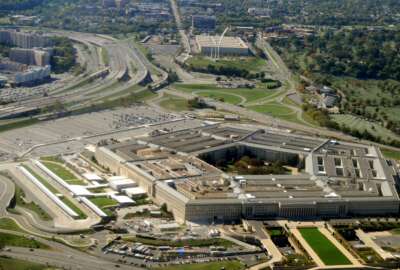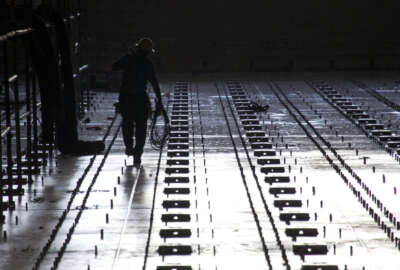
DoD skips BRAC request in 2019 budget
The Defense Department has decided to take a pass on Base Realignment and Closure in the agency's fiscal 2019 budget request.
Subscribe to Federal Drive’s daily audio interviews on iTunes or PodcastOne.
After years of pleading with Congress to close down excess bases in the United States to save money, the Defense Department is backing off its request for 2019.
For the first time in half a decade, the Pentagon isn’t asking Congress to close some of the 22 percent excess infrastructure it is paying to keep open.
DoD estimates it would save about $2 billion a year if it could conduct another round of Base Realignment and Closure (BRAC).
Congress has not been particularly amenable to another round since the last round in 2005.
“We’ve asked for it a number of times in the past without much success, and so I think we’re looking at doing two things going forward,” DoD Comptroller David Norquist said during a Feb. 12 press briefing at the Pentagon. “One is working with Congress to find common areas where we can make reforms and changes that don’t create the same types of obstacles. The other is that we are undergoing a financial statement audit that includes a look at property and assets and investments and improving the accuracy of the data behind it. And there’s a view of being able to take advantage of the data coming out of that process to help us make better decision making on real property.”
One of Defense Secretary Jim Mattis’ main priorities is to bring business reforms to the department, those reforms include instilling budget discipline and using resources effectively, something BRAC is likely to help out with.
The $716 billion budget for 2019 does continue to grow the military, however, so it is possible DoD may use some of the facilities it considered excess.
While DoD is not asking to close bases, it is trying to recapitalize on some facilities that have withered due to neglect.
“One of the challenges of being under sequestration for a long period of time is the effect it has on facilities. Maintenance is one of the first things that get affected when money is tight and so that was one of the areas we wanted to address in this budget,” Norquist said. “We are committed to giving our warfighters the facilities and training areas they need.”
The 2019 budget request increases facilities investments by $700 million compared to the 2018 budget, bringing the request up to $10.5 billion.
Norquist said the investment concentrates efforts on ensuring infrastructure is the ideal size for the force, while also minimizing the cost of maintaining unneeded capacity.
While DoD isn’t asking for another round of BRAC, it won’t be investing any money in those excess facilities either.
DoD will prioritize operational and training facilities, maintenance and production facilities and rebuilding facilities in poor condition.
More than 20 percent of the military’s facilities meet DoD’s criteria for poor or failing condition.
The Army estimated its maintenance backlog for facilities was at $10.8 billion in 2017.
Likewise, the Navy has four shipyards that are in bad shape. The shipyard facility maintenance backlog has grown by 41 percent over the past five years, according to a report the Government Accountability Office. The same report revealed a host of details about how severely the shipyards have deteriorated.
For instance, they now include at least four dozen buildings — comprising 1.2 million square feet of space — that are “condemned, uninhabitable, or otherwise unusable” for ship repairs or any other work.
The total bill to eliminate the maintenance backlog for shipyard facilities currently stands at nearly $5 billion.
The Air Force is dealing with an even bigger problem. Air Force Deputy Assistant Secretary for Budget Maj. Gen. John Pletcher said the service is facing a $33 billion facilities sustainment bow wave.
“We did not get to this $33 billion bow wave overnight and it’s going to take some time to buy that down,” Pletcher said. “We are trying to take care of the worst facilities first.”
Pletcher ruled out closing down some facilities without demolishing them in order to save money in the long run.
“It’s not a matter of mothballing facilities. We are using what we have and we typically maintain those that we have by spending money on the highest priority needs,” Pletcher said.
Even though BRAC isn’t on DoD’s mind this year doesn’t mean that it’s gone for the whole budget cycle. Senate Armed Services Committee Chairman John McCain (R-Ariz.) and Ranking Member Jack Reed (D-R.I.) offered a spin on BRAC last year that would involve more congressional say in the matter.
The provision never made it into law, but might be rehashed during the 2019 defense authorization bill debate.
House Armed Services Committee Ranking Member Adam Smith (D-Wash.) usually puts in a bid for BRAC every year, which doesn’t make it into the final defense authorization bill.
Copyright © 2025 Federal News Network. All rights reserved. This website is not intended for users located within the European Economic Area.
Scott Maucione is a defense reporter for Federal News Network and reports on human capital, workforce and the Defense Department at-large.
Follow @smaucioneWFED
Related Stories





